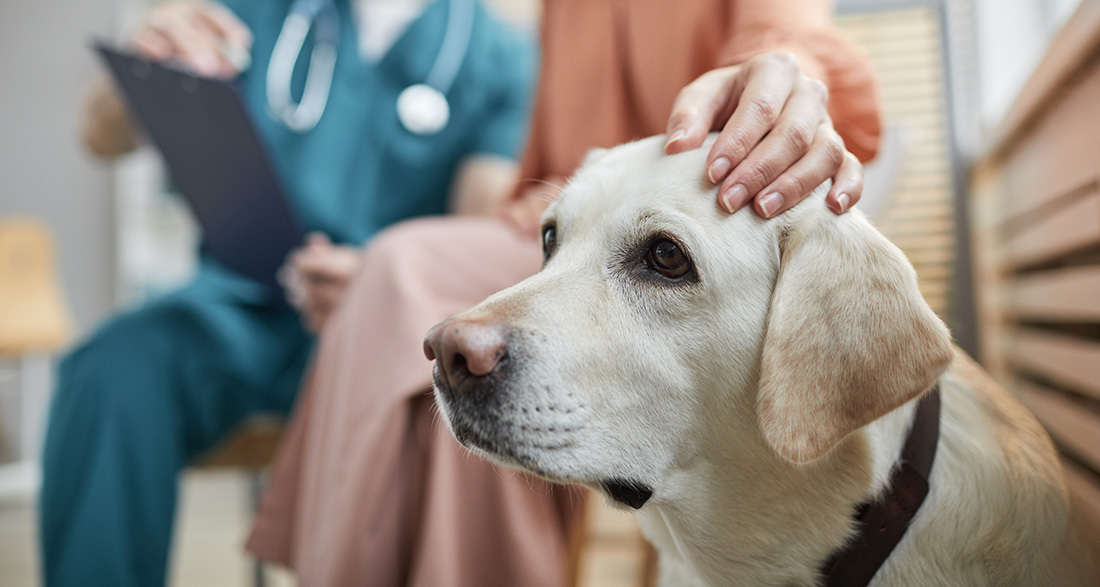Learn how to protect your dog from poison baits. We’ll show you the three most common poison baits and what to do if your dog has been poisoned.
Poison Baits: What Threatens Your Four-Legged Friend?
“Caution, Poison Bait!” You’ve probably seen this sign hanging on a tree in the park. But what is it exactly? And who is being lured? And what do poison baits for dogs look like? We want to explain all of this to you so that you can safely enjoy the outdoors with your dog.
Sadly, some (un)humans seem to have the urge to distribute treats filled with poison or sharp objects along roadsides, in parks, or on meadows to poison dogs. These baits are often well-camouflaged, so your furry friend may sniff and eat them before you can react.
The 3 Most Dangerous Poison Baits for Dogs
Rat Poison
Known from many movies and pest control practices, rat poison can be found in the possession of many people. But is rat poison also dangerous for dogs? Yes, this well-known poison is invisible and comes with devastating consequences for your beloved pet. As the name suggests, rat poison is typically used to control rats and other pests. When it comes to the onset of symptoms after a dog has been poisoned, rat poison is particularly deceptive, and you may not notice it right away. It acts very slowly, and your canine companion will initially develop inconspicuous symptoms like mild restlessness and apathy.
Rat poison mainly causes a disruption in blood clotting, and ingestion can lead to internal bleeding. If your dog has ingested this poison or you suspect it, take your pet to the vet immediately.
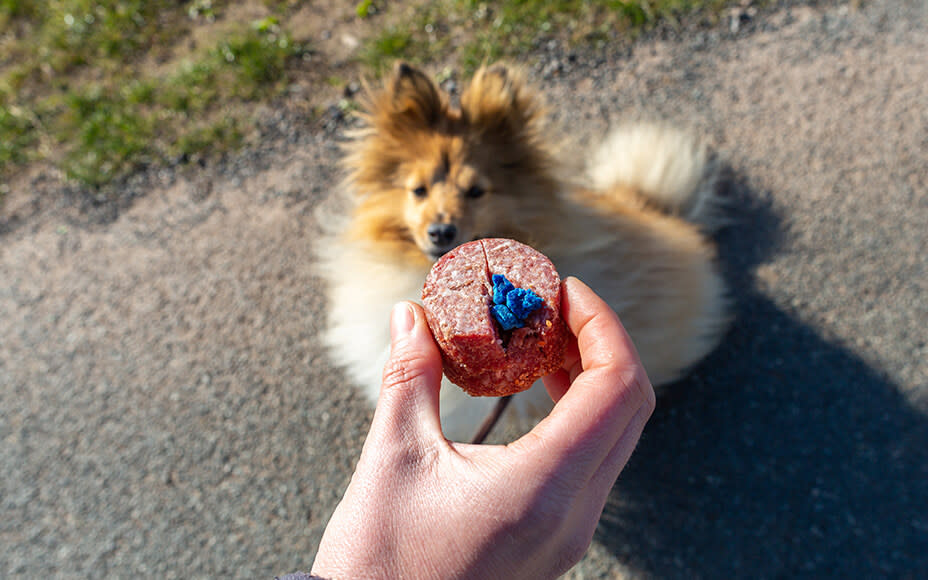
Slug Bait
A sweet-tasting powder that becomes even more fatal due to its attractive flavor for dogs. Often used by gardeners and caretakers, the colorful slug bait can be non-toxic for dogs if only scattered in small doses.
In high concentration, as is the case with a poison bait attack, it can end fatally for your pet without veterinary treatment within 30-60 minutes. Strong heart palpitations, restlessness, and muscle tremors may indicate slug bait poisoning.
The appearance of a poison bait varies greatly, but slug bait is relatively easy to recognize due to its blue color.
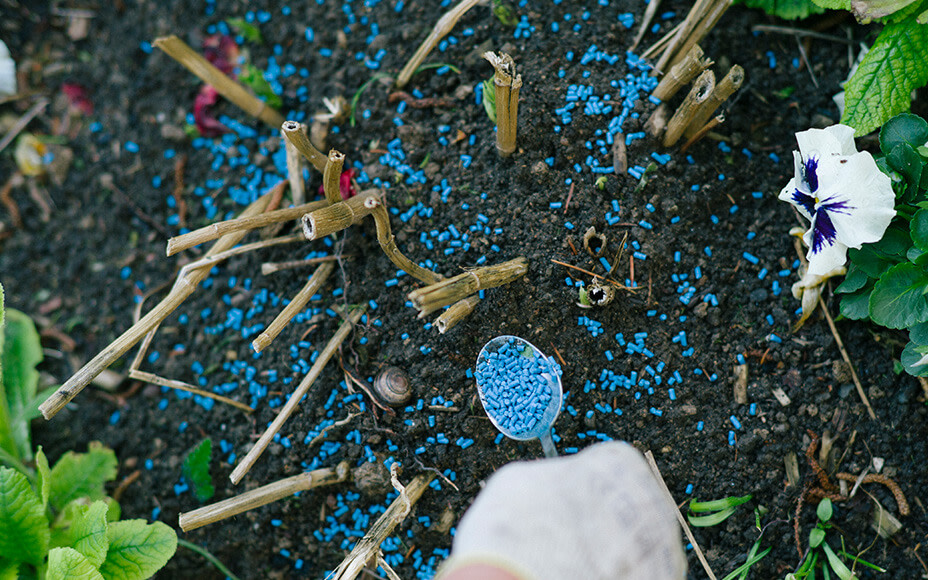
Nails, Razor Blades & Thumbtacks
With direct, life-threatening effects. Often, these sharp objects are hidden in meatballs, sausages, or other foods interesting to dogs. Usually well-disguised, they are not visible from the outside, and our furry friends only see a treat.
In the “best case,” your canine companion may already injure the mucous membranes in the mouth area, spit out the bait, and come away with minor injuries. However, if your furry friend belongs to the category of dogs for whom chewing 40 times is overrated, the sharp object can quickly cause damage to the esophagus, stomach, and intestines.
Here, speed and first aid are crucial. Under no circumstances induce vomiting in your dog, and seek the help of a veterinarian.
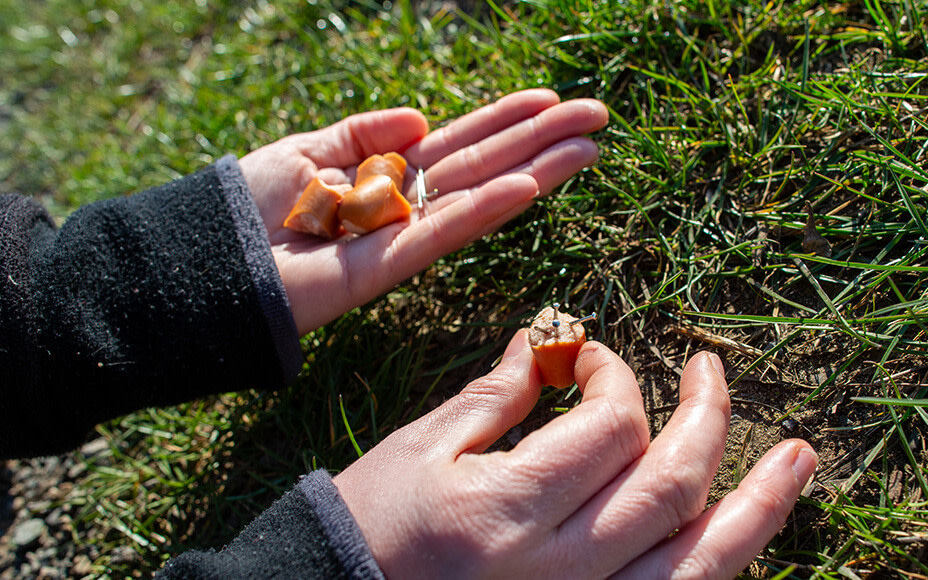
I Suspect My Dog Has Ingested Poison or Have Seen It. What Now?
If it’s too late and you suspect your dog has been poisoned, quick action is required. If the bait contained a sharp object, your furry friend may make it known through howling.
Important:
If dogs eat poison baits, never induce vomiting, as it can worsen the situation. If the bait contained a toxic substance, you cannot immediately recognize it, and a trained eye is needed. Observe your furry friend because initial signs of dog poisoning include symptoms such as restlessness, seizures, trembling, and stomach pain. The symptoms often resemble those of an epileptic seizure.
Your dog may develop other signs over a shorter or longer period, such as vomiting and diarrhea leading to unconsciousness with cardiac arrest.
If your beloved pet shows any of the above symptoms, a visit to the veterinarian is imperative. If you have seen the ingestion by the dog, you should later secure the evidence, have it checked by the vet, and file a report.
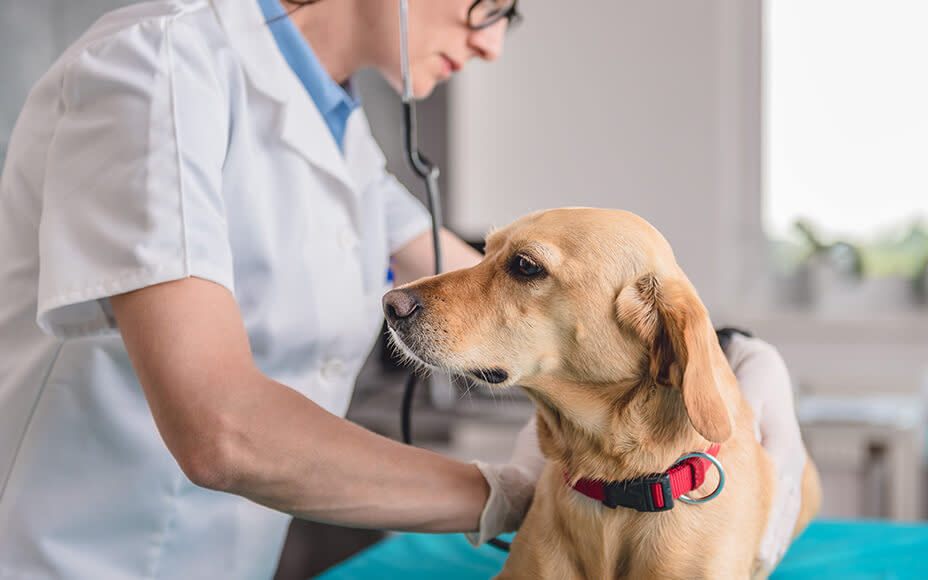
How Do I Prevent My Dog from Eating Poison Baits?
If your dog excels in the vacuum cleaner test of the year and no bread crumb on the street is safe from him, then it’s time for a little training session.
The likelihood that he finds an attractively drizzled piece of sausage filled with poison is quite high. But don’t worry; there’s a solution even for XS200-Labrador vacuum cleaners like Marlo, and that solution is: training.
You can teach your dog specifically to accept food only from you and not to pick up anything from the street. Especially with breeds that are not very picky and would sell their bed for a cheese cube, it may be more challenging, but with perseverance and consistency, it is achievable.
If your dog ever snatches something from the roadside, it’s advantageous if he can release it on command. Practice this at home with his favorite snack, which you offer him. Train the “Drop it!” command and praise him extensively. Working with a food pouch is also suitable for this. You can find tips for training at home here.


